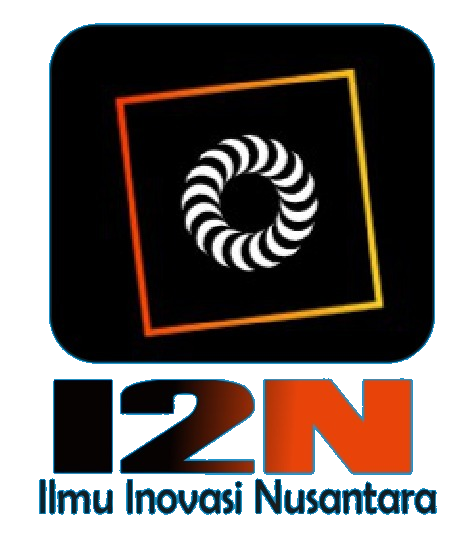Optimizing Chronic Disease Management: The Comprehensive Role and Impact of Exercise Interventions in Public Health
DOI:
https://doi.org/10.58557/(ijeh).v4i3.246Keywords:
Chronic Diseases, Exercise Intervention, SportsAbstract
With the development of the social economy, changes in living habits, and population aging, the incidence of chronic diseases has increased significantly, becoming a major challenge for global public health. This study explores the significant role and effects of exercise intervention in the management of chronic diseases. Chronic diseases have high mortality rates, substantial disease burdens, and significant impacts on medical expenses. Traditional prevention and control strategies centered on treatment show limitations in addressing these issues. This study aims to examine the effects of exercise intervention as a non-pharmacological therapy, which offers low-cost and high-benefit advantages in the prevention and treatment of chronic diseases. Through systematic review and empirical analysis, this research elaborates on the effects of exercise intervention in improving function and reducing pain in arthritis patients, preventing falls in the elderly, enhancing respiratory function in COPD patients, controlling blood glucose in type 2 diabetes patients, and reducing obesity symptoms. The study's findings indicate that exercise intervention has a significant positive impact on various aspects of chronic disease management. These interventions not only improve the physical condition of patients but also reduce the overall disease burden and medical costs. This research emphasizes the importance of personalized and scientific formulation and implementation of exercise interventions. Specific recommendations regarding exercise intervention are provided for future chronic disease prevention and control strategies. Thus, this study offers precise and applicable guidelines for improving the management and prevention of chronic diseases through exercise intervention
References
Cameron, I. D., Gillespie, L. D., Robertson, M. C., et al. (2012). Interventions for preventing falls in older people in care facilities and hospitals. Cochrane Database of Systematic Reviews, 2012(12), CD005465.
Cao, K.-y., Li, X.-q., & Zhu, L.-x. (2016). Effects of different intensity of aerobic exercise on bone mineral density and body composition of male elderly. China Rehabilitation, 31(2), 91-93.
Chang, G., Liu, H., Yang, Y., Ma, J., Wang, W., & Jiang, G. (2009). Effects of happy ten minutes intervention on obesity-related indicators in primary school students. China Chronic Disease Prevention and Control, 17(5), 505-507.
China CDC. (2019). China Chronic Disease Report. Beijing: China CDC.
Fransen, M., McConnell, S., Harmer, A. R., et al. (2015). Exercise for osteoarthritis of the knee. Cochrane Database of Systematic Reviews, 2015(1), CD004376.
Fransen, M., McConnell, S., Hernandez-Molina, G., et al. (2014). Exercise for osteoarthritis of the hip. Cochrane Database of Systematic Reviews, 2014(4), CD007912.
Gillespie, L. D., Robertson, M. C., Gillespie, W. J., et al. (2012). Interventions for preventing falls in older people living in the community. Cochrane Database of Systematic Reviews, 2012(9), CD007146.
Hirst, J. A., Farmer, A. J., Ali, R., et al. (2012). Quantifying the effect of metformin treatment and dose on glycemic control. Diabetes Care, 35(2), 446-454.
Jakes, R.-W. (n.d.). Patterns of physical activity and ultrasound attenuation by heel bone among Norfolk cohort of European Prospective Investigation of Cancer (EPIC Norfolk): Population based. BMJ, 7279, 140-140.
Juhl, C., Christensen, R., Roos, E. M., et al. (2014). Impact of exercise type and dose on pain and disability in knee osteoarthritis: A systematic review and meta-regression analysis of randomized controlled trials. Arthritis & Rheumatology, 66, 622-636.
Li, J.-y., Liang, C., Gao, C., et al. (2019). Research on the connotation and path of body-medicine integration: Taking exercise prescription outpatient service as an example. Sports Science, 39(7), 23-32.
Liu, S. J., Ma, X., & Chen, X. Q. (2001). Studies on bone mineral density and biochemical markers of bone metabolism in postmenopausal female physical education teachers and non-exercise aged women. China Journal of Sports Medicine, 2, 151-153.
Look Ahead Research Group; Wing, R. R., Bolin, P., Brancati, F. L., et al. (2013). Cardiovascular effects of intensive lifestyle intervention in type 2 diabetes. New England Journal of Medicine, 369(2), 145-154.
Ma, C. (2012). Understanding and discussion of new ideas on exercise weight loss. Sports Research and Education, 27(6), 120-123.
McCarthy, B., Casey, D., Devane, D., et al. (2015). Pulmonary rehabilitation for chronic obstructive pulmonary disease. Cochrane Database of Systematic Reviews, 2015(2), CD003793.
Naci, H., & Ioannidis, J. P. A. (2015). Comparative effectiveness of exercise and drug interventions on mortality outcomes: meta-analysis of randomized controlled trials. BMJ, 347, f5577.
Pan, H., & Yi, F. (2010). Clinical observation of Ba Duan Jin exercise on rehabilitation treatment of grade 1 hypertension in the elderly. Journal of Nanjing Institute of Physical Education, 9(1), 4-5.
People's Republic of China. (2020). Health in China (full text). Retrieved December 15, 2020, from [URL if available]
Puhan, M. A., Gimeno-Santos, E., Scharplatz, M., et al. (2011). Pulmonary rehabilitation following exacerbations of chronic obstructive pulmonary disease. Cochrane Database of Systematic Reviews, 2011(10), CD005305.
Sherrington, C., Tiedemann, A., Fairhall, N., et al. (2011). Exercise to prevent falls in older adults: An updated meta-analysis and best practice recommendations. NSW Public Health Bulletin, 22(2), 78-83.
Suhrcke, M., McKee, M., Arce, R. S., et al. (2006). Investment in health could be good for Europe's economies. BMJ, 333(7576), 1017-1019.
Sumanasinghe, R.-D., Bernacki, S.-H., & Lobo, E.-G. (2022). Osteogenic differentiation of human mesenchymal stem cells in collagen matrices: Effect of uniaxial cyclic tensile strain on bone morphogenetic protein (BMP-2) mRNA expression. Mary Ann Liebert Inc.
Tubach, F., Ravaud, P., Baron, G., et al. (2005). Evaluation of clinically relevant changes in patient-reported outcomes in knee and hip osteoarthritis: The minimal clinically important improvement. Annals of the Rheumatic Diseases, 64, 29-33.
Umpierre, D., Kramer, C. K., Leitao, C. B., et al. (2011). Physical activity advice only or structured exercise training and association with HbA1c levels in type 2 diabetes. JAMA, 305(18), 1790-1799.
Uthman, O. A., van der Windt, D. A., Jordan, J. L., et al. (2013). Exercise for lower limb osteoarthritis: Systematic review incorporating trial sequential analysis and network meta-analysis. BMJ, 347, f5555.
Wang, B., & Hou, J. (2018). Effects of long-term aerobic exercise on the expression of vitamin D receptor in bone tissue of aged rats. Journal of Xi’an University of Technology, 38(4), 318-323.
Wang, B., & Hou, J. (2018). Effects of swimming on reducing hypertension and hyperlipidemia in middle-aged and elderly. China Sports Coach, 26(4), 76-78.
Wang, J. (2018). Effects of swimming on reducing hypertension and hyperlipidemia in middle-aged and elderly. China Sports Coach, 26(4), 76-78.
Wang, L., Zhao, W.-z., & Li, B. (2010). Growth factors participate in bone remodeling under stress. China Tissue Engineering Research and Clinical Rehabilitation, 14(33), 6198-6201.
Warburton, D. E. R., & Bredin, S. S. D. (2017). Health benefits of physical activity: a systematic review of current systematic reviews. Current Opinion in Cardiology, 32(5), 541-556.
Wenyu, L. (2018). Regulation of eight weeks of aerobic exercise on blood lipid and intestinal flora of adolescent obese (Unpublished doctoral dissertation). Shandong Institute of Physical Education.
World Health Organization. (2005). Preventing chronic diseases: a vital investment. Geneva: World Health Organization.
World Health Organization. (2020). Noncommunicable diseases. Retrieved from https://www.who.int/news-room/fact-sheets/detail/noncommunicable-diseases.
Yan, L., Yu, C., & Zhang, M. (2002). A survey of osteoporosis in high-intensity mental workers in a university of Beijing. China Journal of Sports Medicine, 3, 328-329.
Yu, F., & Yue, X. (2013). Analysis of the value of strength training in the field of weight loss by exercise. Modern Sports Science and Technology, 3(36), 19-20.
Zhang, D., Shi, J., Xiong, Y., & Zhang, T. (2015). Intervention of scientific nutrition and exercise fitness on overweight and obesity. China Food and Nutrition, 21(2), 76-79.
Zhao, Y., Wang, L., & Song, W. (2010). Biochemistry analysis of obesity and aerobic exercise weight loss. Network Wealth, 17, 202-204.
Zhu, J.-y., & Li, H.-w. (2019). Latest progress of exercise intervention for chronic diseases in China. Sports Excellence, 38(11), 98-99.
Downloads
Published
How to Cite
Issue
Section
License
Copyright (c) 2024 Zhao Xingyu

This work is licensed under a Creative Commons Attribution-ShareAlike 4.0 International License.














